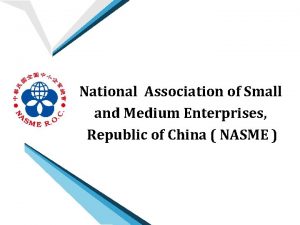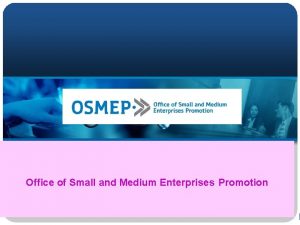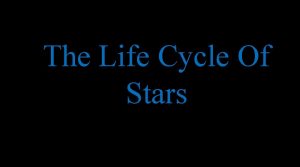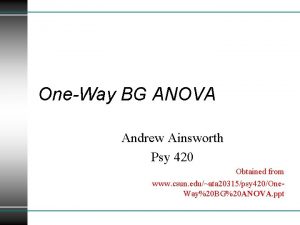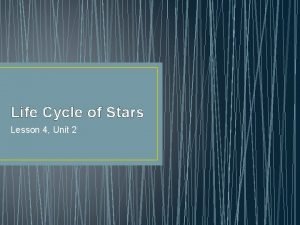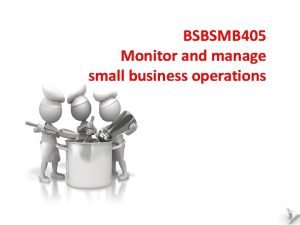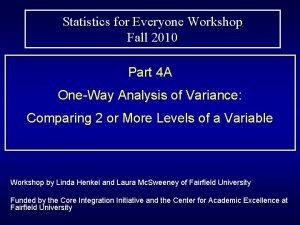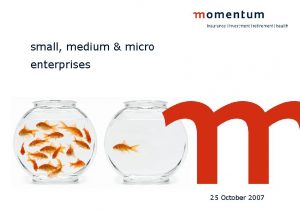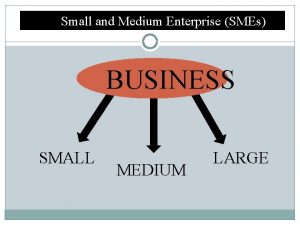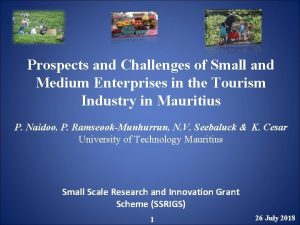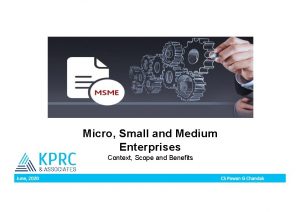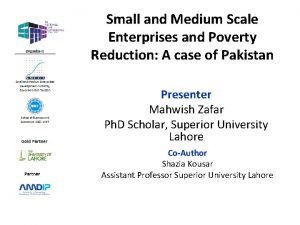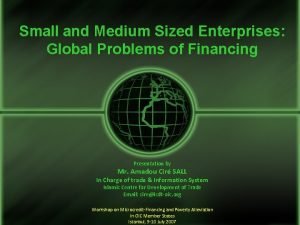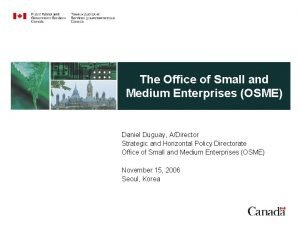Investment Vehicles for Small and Medium Enterprises What












- Slides: 12

Investment Vehicles for Small and Medium Enterprises

What is an SME? • On average, defined as a business having 5 -100 employees. • SMEs drive the economy. In the United States, over 90% of all businesses are classified as small. • Areas without strong SMEs do not have strong economies.

Barriers to Cleaner Practices • Lack of Information • Lack of Available Financing • Lack of Interest

Barriers to Financing • Seen as an unprofitable sector • Seen as high risk • Associated environmental problems seen as even more risky

Investment Vehicles • Existing Banks, Credit Unions, Microfinance Institutions • De Novo Financial Institutions – Regulated Entities – Traditional Loan Funds – Risk Capital Funds – Guarantee Funds

Existing Institutions • Pros – No start-up costs – Localized approach, may have branch system – Strengthens existing institutions • Cons – Subject to bank management’s attitude – Institution may discontinue program after credit line or TA dries up

New Formal Institutions • High start-up costs, human resource intensive • Subject to regulations • Mission-driven banks and credit unions are a growing industry in the West • Can have large impact through a single institution

Loan Funds • Traditional forms of financing • Can be very small or very large (ranges from $500, 000 to 30 million in US) • Lean and flexible, small target market • Capital is generated from governments, foundations, individuals, and businesses

Risk Capital Funds • Mezzanine, quasi-equity, or equity investments • Much more risky, but higher returns • Focused on high-growth industries • Usually cover more geography than traditional loan fund

Guarantee Funds • Not direct lending, but requires same expertise • Helps institutions mitigate risk or perceived risk • A centralized process, but can be easily streamlined and cover huge geographies.

Shore. Bank Pacific • First Eco-Bank in the United States, founded in 1997 • Covers Pacific Northwest, particularly the rural areas • Employs a bank scientist to help underwrite loans • Includes environmental mission score in overall decision-process

Case Examples • Capital Divers, Inc. – Eco-tourism, water protection • Environmental Engineering – Innovative technology • Stormwater Management, Inc. – Uses natural media to filter road runoff • Organicare, Inc. – Natural fertilizers stay in the soil • Clean Water – NGO water assn providing access to potable water
 National association of small and medium enterprises
National association of small and medium enterprises Bsmepa
Bsmepa Office of small and medium enterprises promotion
Office of small and medium enterprises promotion Micro enterprise
Micro enterprise Hot media cold media
Hot media cold media Work improvement in small enterprises
Work improvement in small enterprises Fixed investment and inventory investment
Fixed investment and inventory investment Vydj
Vydj Life of a star
Life of a star Small medium and large effect sizes
Small medium and large effect sizes Star with small and medium mass
Star with small and medium mass Small business operations
Small business operations Effect size f small, medium large
Effect size f small, medium large
